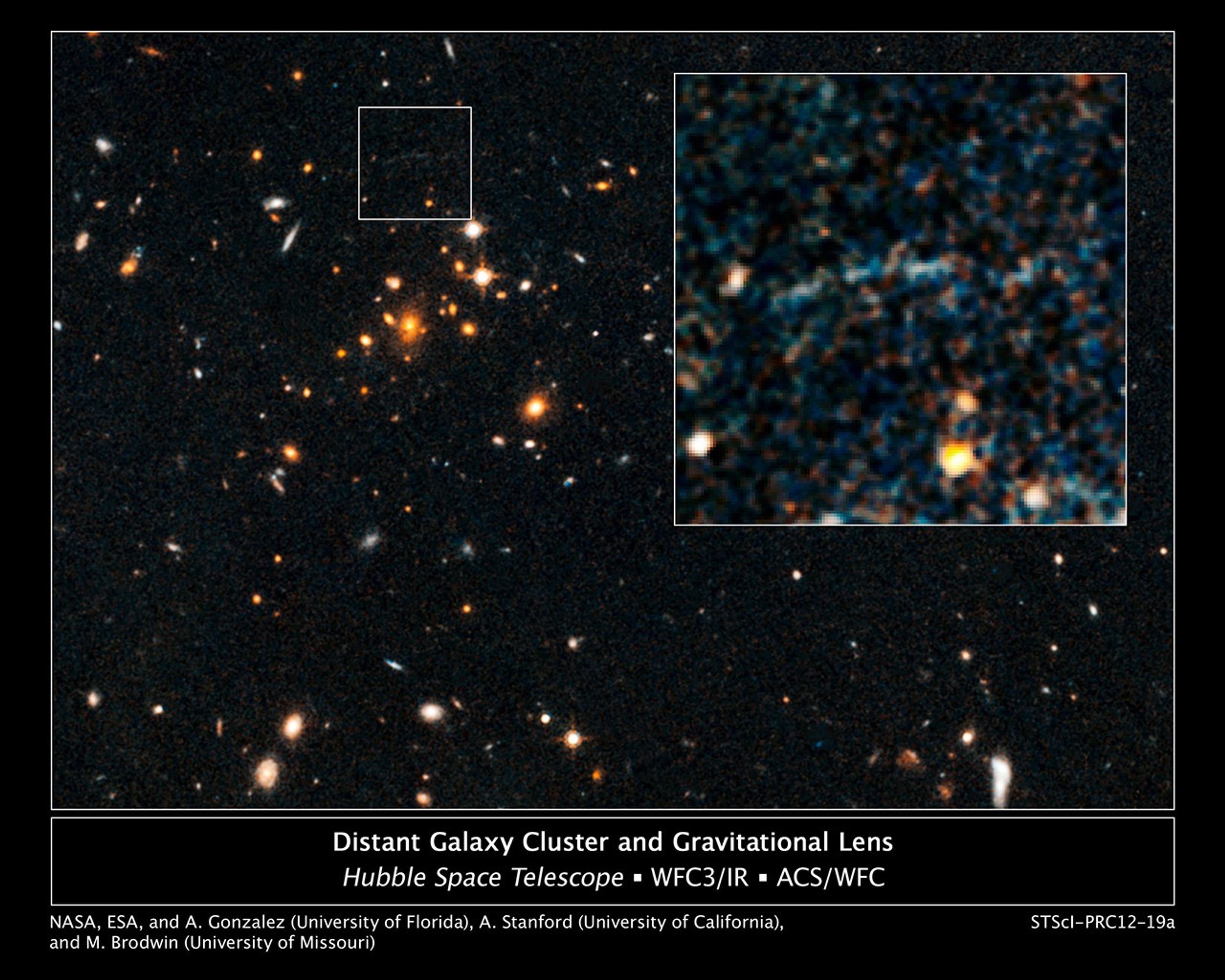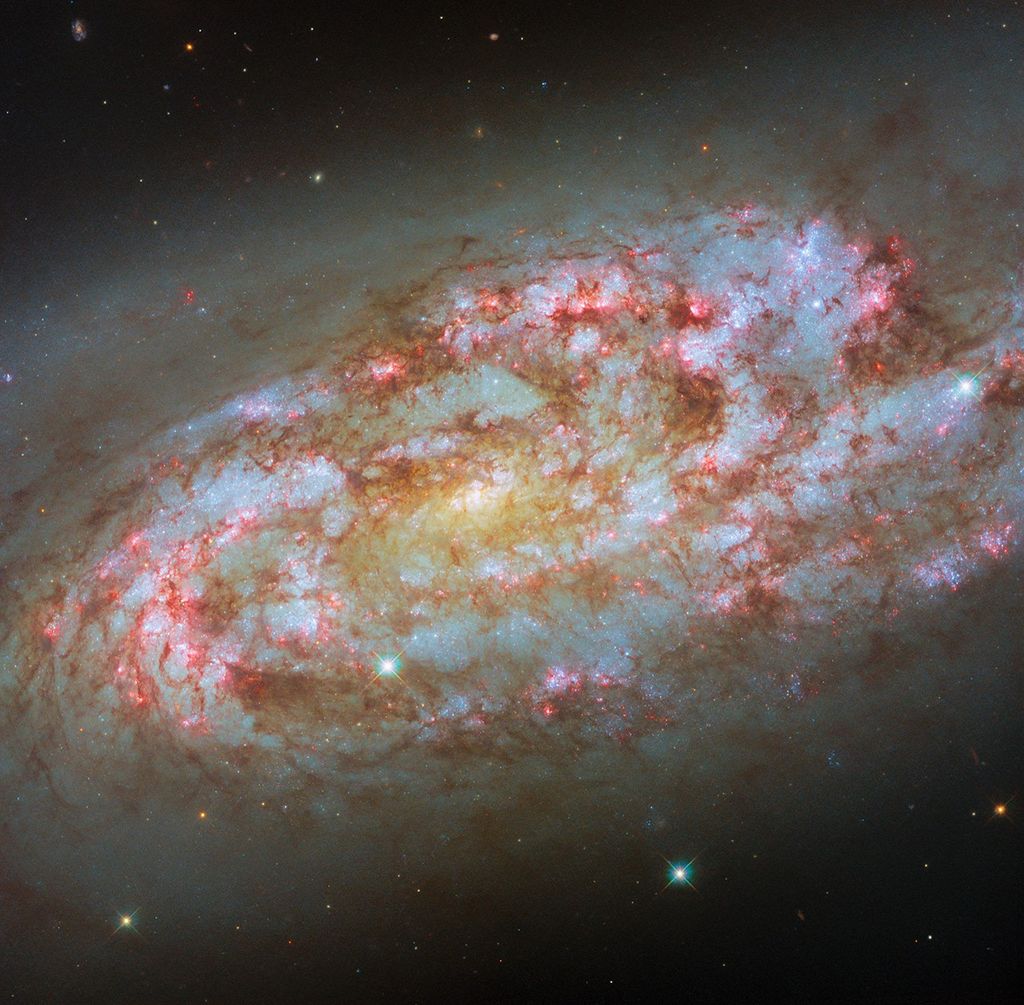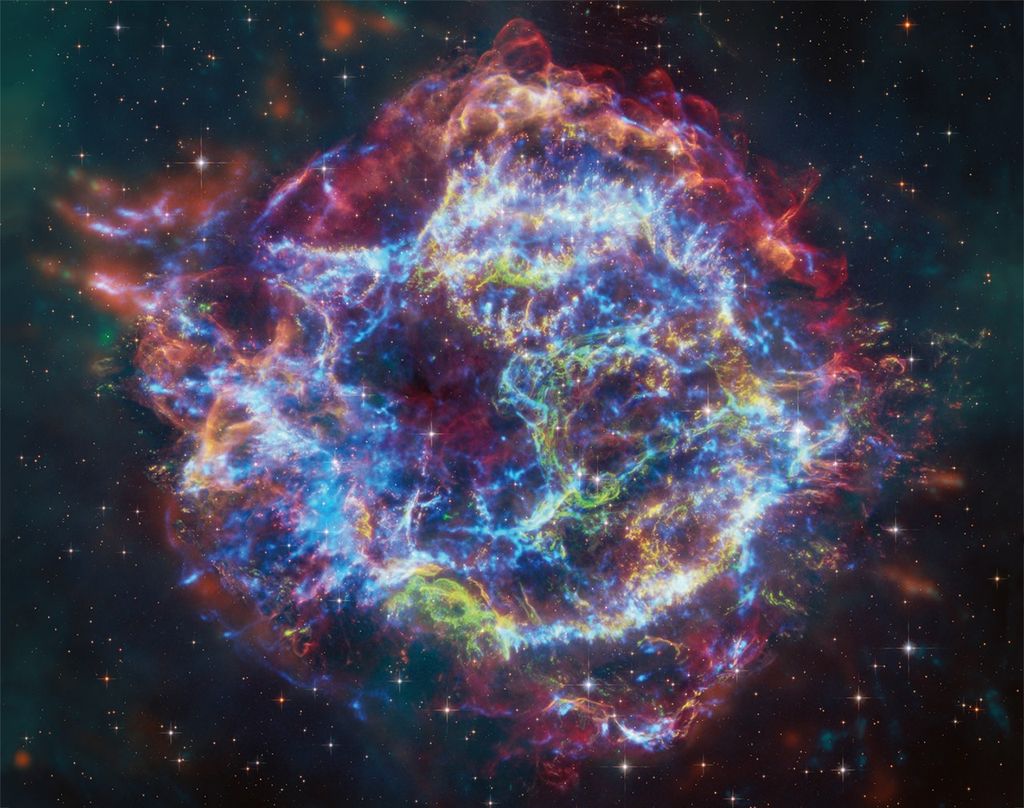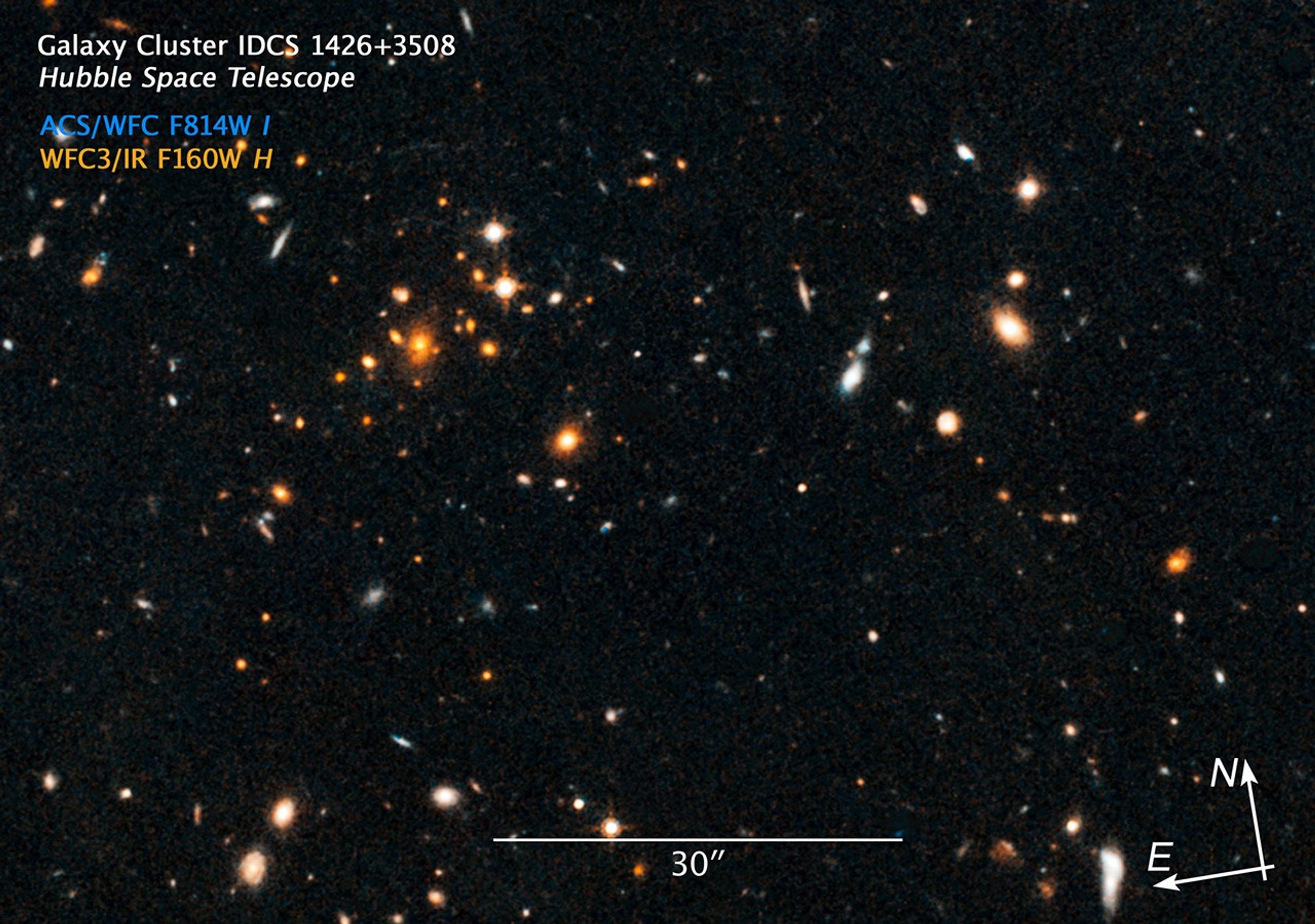1 min read
Galaxy Cluster IDCS J1426.5+3508 and Giant Arc

These images, taken by NASA's Hubble Space Telescope, show an arc of blue light behind an extremely massive cluster of galaxies residing 10 billion light-years away.
The giant arc is the stretched shape of a more distant star-forming galaxy whose light is distorted by the monster cluster's powerful gravity, an effect called gravitational lensing. The "lensed" galaxy existed 10 billion to 13 billion years ago.
The arc, located within the small box, is barely visible in the Hubble image of the cluster, named IDCS J1426.5+3508. A close-up image of the arc is shown in the inset. The images were taken by Hubble's Advanced Camera for Surveys and Wide Field Camera 3 in 2010.
The cluster is the most massive found at that epoch, weighing as much as 500 trillion suns. The assemblage is 5 to 10 times larger than other clusters found at such an early time in the universe's history. This unique system constitutes the most distant cluster known to "host" a giant gravitationally lensed arc.
About the Object
- R.A. PositionR.A. PositionRight ascension – analogous to longitude – is one component of an object's position.14h 25m 59.99s
- Dec. PositionDec. PositionDeclination – analogous to latitude – is one component of an object's position.35° 7' 59.99"
- ConstellationConstellationOne of 88 recognized regions of the celestial sphere in which the object appears.Boötes
- DistanceDistanceThe physical distance from Earth to the astronomical object. Distances within our solar system are usually measured in Astronomical Units (AU). Distances between stars are usually measured in light-years. Interstellar distances can also be measured in parsecs.10 billion light-years
About the Data
- Data DescriptionData DescriptionProposal: A description of the observations, their scientific justification, and the links to the data available in the science archive.
Science Team: The astronomers who planned the observations and analyzed the data. "PI" refers to the Principal Investigator.The image was created from Hubble data from proposals: 11663: M. Brodwin (University of Missouri-Kansas City and Harvard-Smithsonian Center for Astrophysics) et al. 12203: A. Stanford (University of California, Davis and Lawrence Livermore National Laboratory) et al. The science team includes: A. Stanford (University of California, Davis and Lawrence Livermore National Laboratory), and M. Brodwin (University of Missouri-Kansas City and Harvard-Smithsonian Center for Astrophysics), A. Gonzalez, C. Fedeli, D. Gettings, and C. Mancone (University of Florida, Gainesville), P. Eisenhardt, D. Stern, and L. Moustakas (JPL), A. Dey and B. Jannuzi (NOAO), G. Zeimann (University of California, Davis), G. Snyder (Harvard-Smithsonian Center for Astrophysics), T. Plagge, J. Carlstrom, and E. Leitch (University of Chicago), D. Marrone (Steward Observatory), and M. Joy (NASA/MSFC). - InstrumentInstrumentThe science instrument used to produce the data.HST>ACS/WFC and HST>WFC3/IR
- Exposure DatesExposure DatesThe date(s) that the telescope made its observations and the total exposure time.July 8, 2010 and November 7, 2010
- FiltersFiltersThe camera filters that were used in the science observations.WFC3/IR: F160W (H) ACS/WFC: F814W (I)
- Object NameObject NameA name or catalog number that astronomers use to identify an astronomical object.IDCS J1426.5+3508
- Object DescriptionObject DescriptionThe type of astronomical object.Galaxy Cluster and distant galaxy
- Release DateJune 26, 2012
- Science ReleaseNASA’s Hubble Spots Rare Gravitational Arc from Distant, Hefty Galaxy Cluster
- Credit

This image is a composite of separate exposures acquired by the ACS/WFC and WFC3/IR instruments. Several filters were used to sample various wavelength and energy ranges. The color results from assigning different hues (colors) to each monochromatic (grayscale) image associated with an individual filter. In this case, the assigned colors are: Orange: F160W (H) Blue: F814W (I)

Share
Details
Claire Andreoli
NASA’s Goddard Space Flight Center
Greenbelt, Maryland
claire.andreoli@nasa.gov


































